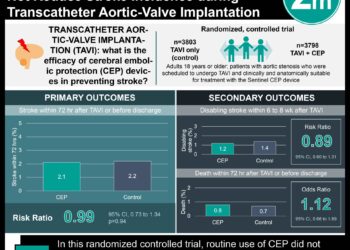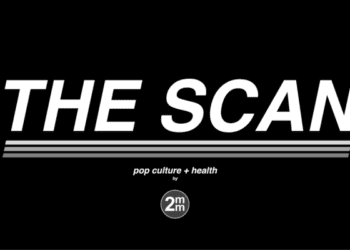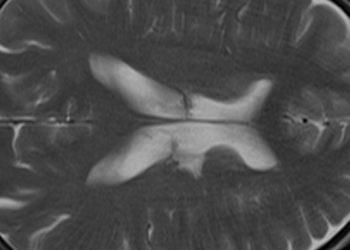2 Minute Medicine Rewind May 22nd, 2022
Effect of Physician Consultation on Satisfaction With Hearing Aid Use
1. In a trial of patients with hearing loss, a physician consultation focused on hearing changes does not alter a patient’s satisfaction with hearing aids 3 months post-fitting.
Evidence Rating Level: 1 (Excellent)
Hearing loss is one of the most common disabilities affecting older adults worldwide. Despite improving functional capacity in adults with hearing impairments, hearing aids are often associated with dissatisfaction. In British Columbia, the hearing aid fitting process involves only an audiologist. Therefore, this randomized controlled trial sought to evaluate whether a physician consultation improved a patient’s satisfaction with the hearing aid. The trial analyzed data from 93 participants, of which 51 (mean [SD] age, 71.7 [8.3] years; 28 women [54.9%]) were placed in a control group and 42 (mean [SD] age, 69.9 [7.6] years; 17 women [40.5%]) in the intervention group. The control group received standard care which included follow-up with solely their dispensing audiologist. The intervention group attended a single visit with a physician in addition to their scheduled follow-up with the audiologist. The primary outcome measured was hearing aid satisfaction 3 months post-fitting which was measured using the Satisfaction with Amplification in Daily Life (SADL) questionnaire. The study found no statistically significant difference between the two groups’ SADL scores (control: mean [SD] score, 5.33 [0.72]; intervention: mean [SD] score, 5.35 [0.61]; mean difference, 0.02; 95% CI, -0.25 – 0.29). The secondary outcome measured was the number of returned hearing aids. Once again, the study did not find a statistically significant difference between the intergroups (control, 1; intervention, 0). Therefore, the study concluded that a physician consultation focused on hearing change does not alter a patient’s satisfaction with hearing aids 3 months post-fitting. However, the sample size for this study limited the internal validity and thus larger-scaled studies are needed to validate these results.
Sex-Based Disparities in Timeliness of Trauma Care and Discharge Disposition
1. In a large cohort of trauma patients, it was found that female sex was associated with slightly longer delays in trauma care and a higher likelihood of discharge to long-term care facilities.
Evidence Rating Level: 2 (Good)
Many studies have elucidated sex differences in timeliness of diagnostic and therapeutic care in myocardial infarctions, strokes, and intensive-care unit triage. However, sex differences in trauma care are less well studied. Therefore, this retrospective cohort study sought to evaluate sex-based differences in timeliness of trauma care and subsequently differences in discharge disposition. The study included adult patients with an Injury Severity Score (ISS) of greater than 15 who had a diagnosis of traumatic brain injury, intra-abdominal injury, pelvic fracture, femur fracture, and spinal injury due to their trauma. Of the included 28 332 patients, 20 002 (70.6%) were male (mean [SD] age, 43.3 [18.2] years) and 8330 (29.4%) were female (mean [SD] age, 48.5 [21.1] years). The primary outcome measured was discharge disposition, with options of inpatient mortality, discharge to post-acute care facility (PACF) (e.g., home, inpatient psychiatry, to law enforcement, or to acute rehabilitation), or discharge to a long-term care facility (LTF) (e.g., skilled nursing facility or long-term acute care hospital). The study found that female patients experienced a longer emergency department length of stay (ED LOS) (median [IQR], 184 [92-314] minutes vs 172 [86-289] minutes; P < .001) and longer time in pretriage (median [IQR], 52 [36-80] minutes vs 49 [34-77] minutes; P < .001) compared to their male counterparts. Additionally, male patients were more likely to die than be discharged to an LTF than female patients (male patient : female patient OR, 1.51; 95% CI, 1.36-1.69). However, female patients were more likely to be discharged to an LTF than to a PACF (female patient : male patient, OR, 0.72; 95% CI, 0.67-0.78). These results were obtained after matching by age, ISS, mechanism, and injury type amongst the groups. Overall, the study concluded that female trauma patients experienced slightly longer delays in trauma care and had a higher likelihood of discharge to long-term care facilities than their male counterparts. Future studies would benefit from further investigating the causes of such delays to target quality improvement efforts.
1. In a cohort of adults from South Korea, new-onset Parkinson’s disease was associated with an increased risk of suicide.
Evidence Rating Level: 2 (Good)
Parkinson’s disease (PD) is the second most common neurocognitive disease in older adults, and it is associated with many psychiatric symptoms. Although several studies have examined the association between PD and suicide, they have not provided consistent results. Therefore, this cohort study evaluated the suicide incidence rate in patients with new-onset PD. The study made use of data from National Health Insurance Service Senior Sample Cohort of South Korea. It selected 17,143 incident PD patients and 17,143 risk set controls, matched by propensity score for follow-up. The primary outcome measured was the suicide incidence rate. During the entire follow-up period, 121 suicides were confirmed during 58,530.1 person-years of patients with PD (IR, 206.7 per 100,000 person-years). The secondary outcome measured was the hazard ratio of suicide over time among patients with PD after the onset of PD, compared to that of the control group. During the first 180 days of follow-up, the hazard ratio for suicide amongst PD patients compared to the control group was 2.64 (95% CI, 1.31-5.30). During 181 – 365 days of follow-up the hazard ratio was 2.19 (95% CI, 0.88-5.43). During 0 – 365 days of follow-up the hazard ratio was 2.47 (95% CI, 1.42-4.28). During 366 – 730 days of follow-up the hazard ratio was 2.11 (95% CI, 1.02-4.39). After more than 730 days of follow-up the hazard ratio was 2.19 (95% CI, 1.44-3.33).Throughout the entire study period, a total of 185 suicide cases were identified, from which 121 were PD patients and 64 were the matched controls (adjusted hazards ratio, 2.26; 95% CI, 1.67-3.06). Therefore, the study concluded that there was an increased risk of suicide in patients with new-onset PD, regardless of period after diagnosis. Future studies are needed that evaluate other confounders such as co-morbidities to truly validate the association found by this study.
1. In a cohort of adults from Australia, arthritis was associated with increased risk of cardiovascular disease risk factors.
Evidence Rating Level: 3 (Average)
Cardiovascular disease (CVD) is associated with high morbidity and mortality world-wide and has known risk factors including obesity, hypertension, dyslipidemia, and diabetes. Arthritis is a musculoskeletal condition that leads to pain and immobility. This cross-sectional study aimed to examine the relationship between arthritis and CVD risk factors in young, middle-aged, and older adults. It made use of data from the Australian National Health Survey and included 13 776 participants. Arthritis was reported in 4.0% of young adults (ages 18 – 39), 28.8% of middle-aged adults (ages 40 – 64), and 54.5% of older adults (ages 65 and above). The primary outcomes measured in this study were the associations between arthritis and CVD risk factors including obesity, diabetes, hypertension, and dyslipidemia. The study found that arthritis was associated with increased odds of all the above risk factors when compared to adults without arthritis. In younger adults, those with arthritis had a 2.07-fold higher prevalence (95% CI, 1.36-3.16) of obesity, 5.70-fold higher prevalence (95% CI, 1.74-15.37) of diabetes, 2.72-fold higher prevalence (95% CI, 1.53-4.84) of hypertension, and a 4.64-fold higher prevalence (95% CI, 2.56-8.39) of dyslipidemia compared to those without arthritis. In middle-aged adults, those with arthritis had a 1.75-fold higher prevalence (95% CI, 1.54-2.01) of obesity, 1.64-fold higher prevalence (95% CI, 1.33-2.03) of diabetes, 1.78-fold higher prevalence (95% CI, 1.60-2.04) of hypertension, and a 2.14-fold higher prevalence (95% CI, 1.84-2.49) of dyslipidemia compared to those without arthritis. In older adults, those with arthritis had a 1.89-fold higher prevalence (95% CI, 1.62-2.21) of obesity, 1.37-fold higher prevalence (95% CI, 1.15-1.62) of diabetes, 1.48-fold higher prevalence (95% CI, 1.31-1.68) of hypertension, and a 1.22-fold higher prevalence (95% CI, 1.07-1.41) of dyslipidemia compared to those without arthritis. Therefore, the study concluded that adults of all ages with arthritis are at increased odds of having CVD risk factors compared to those without arthritis. To further validate the results of this study, larger prospective studies are needed.
Effects of Sugammadex and Neostigmine on Post-operative Nausea and Vomiting in ENT Surgery
1. In a group of patients undergoing ear, nose and throat surgery, reversal of neuromuscular blockade with sugammadex was associated with lower incidence of post-operative nausea and vomiting compared to neostigmine-atropine combination.
Evidence Rating Level: 1 (Excellent)
Post-operative nausea and vomiting (PONV) is a common consequence of receiving general anesthesia, and the incidence is especially higher in patients undergoing ear, nose, and throat (ENT) surgery. Neostigmine is an anticholinesterase inhibitor used to antagonize muscle paralysis and studies have found that it increases incidence of PONV. Sugammadex is a selective gamma-cyclodextrin drug that also reverses muscle paralysis. There is a lack of literature comparing the two options and their association with PONV. Therefore, this randomized trial aimed to compare the PONV effects of sugammadex versus neostigmine-atropine combination after ENT surgery. It included 136 patients who were randomized to either receive a neostigmine-atropine combination (group N – neostigmine 2.5mg and atropine 1mg; n=68) or sugammadex (group S – sugammadex 2mg/kg; n=68) at the end of the surgery. All other factors including anesthesia, anti-emetics, and analgesics were kept the same between the two groups. There were no statistically significant differences between the groups in terms of PONV risk scores, type of surgery, duration of surgery, total morphine consumption intraoperatively, and demographics. The primary outcomes measured were PONV scores and the need for rescue anti-emetics upon arrival at the post-anesthesia recovery unit and at 1, 6, 12, and 24-hours post-reversal. The study found that the incidence of PONV was significantly lower in group S (3%) compared to those in group N (20%) at 6-hours post-operatively (p=0.013). At all other time intervals, the incidence of PONV was comparable amongst the two groups. It also found that none of the patients in group S required a rescue anti-emetic whereas 2 patients in group N required a rescue antiemetic at 1 and 6 hours post-operatively. However, this was not found to be statistically significant. Overall, the study concluded that reversal of neuromuscular blockade with sugammadex demonstrated a lower incidence of PONV compared to neostigmine-atropine in the first 6 hours post-reversal. However, given the smaller sample size of the study, more trials are needed to confirm these results.







